NORTH SAILS BLOG
All
Events
Guides
News
People
Podcast
Sustainability
Tech & Innovation
Travel & Adventure
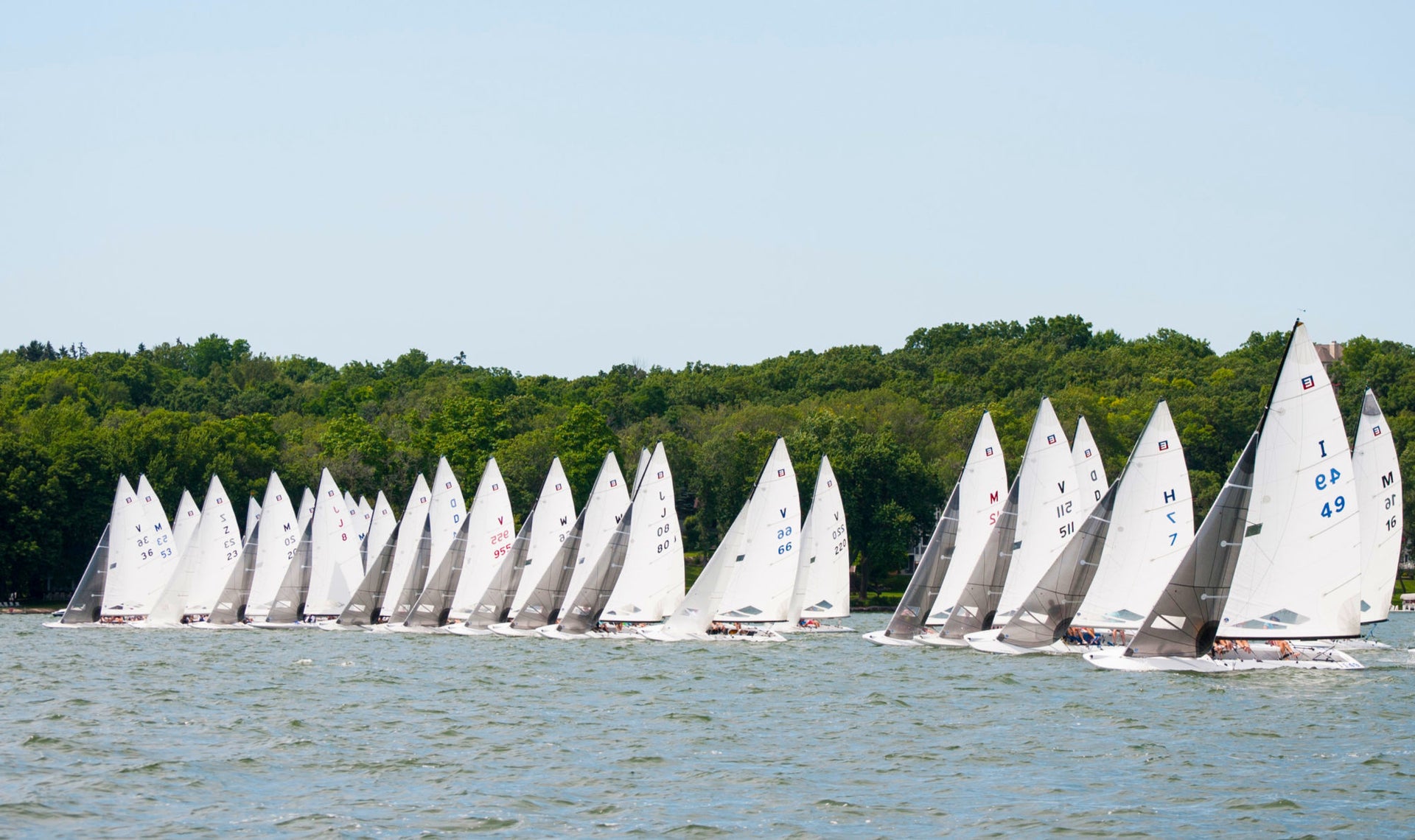
NORTH SAILS CONTINUES THEIR SUPPORT OF SCOW ONE DESIGN CLASSES
NORTH SAILS CONTINUES THEIR SUPPORT OF SCOW ONE DESIGN CLASSES
Providing Users with Championship-Winning Sails that have Dominated Scow Classes for Decades
📸 Hannah Lee Noll
As you may know, North Sails and Melges Boatworks (North Sails Zenda) have worked in conjunction in the past to provide sails and service to the Scow fleets across the U.S. We are writing to let you know that while Melges Boatworks has decided to change tacks and represent a different sail brand, we remain committed to providing top level performance to our Scow customers. North Sails views this as an opportunity to raise the bar in terms of our service, accessibility, and commitment to the Scow Fleets. North Sails owns all of the current winning designs you have become accustomed to.
We have been manufacturing and designing championship winning scow sails for over forty years and look forward to doing so for forty more. The North Sails One Design team has a long tradition of serving one design fleets all over the country and we look forward to working with you! Our network of local one design experts and dealers are available to help you get the most out of your sails so you can reach your goals whether it is an informal evening race, or the Class Championship.
We will continue to develop and sell the North Scow sail models that you have been using to win all the major Scow Championships, the same sails that you have learned to trim and tune. The sails with the quality and consistency that you expect from a North Sails product. As always, North Sails stands behind our products and we take pride in developing and delivering the fastest sails available.
Please feel free to reach out to us or anyone on the North team if you have any questions. We are excited to open up the entire North Sails team to work with you directly on your scow program.
Our team is looking forward to seeing you on the water soon.
A Scow C Scow E Scow MC Scow X Boat
READ MORE
READ MORE
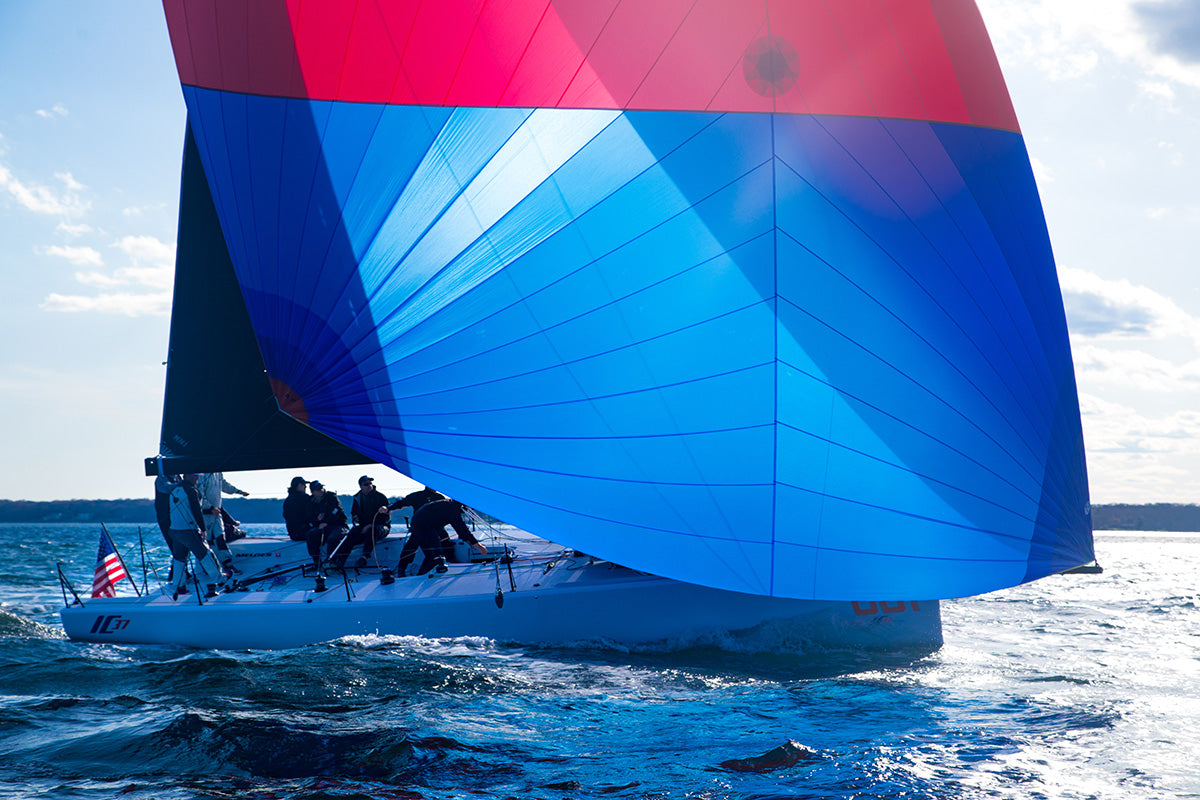
NORTH SAILS IC37 WEBINAR COLLECTION
NORTH SAILS IC37 WEBINAR COLLECTION
Sail Trim, Boat Speed, Crew Tips, and More
We’ve collected all five North Sails IC37 Webinars, hosted by IC37 Class Coach, Greg Fisher, featuring special guests and key experts in the class. Each webinar focuses on something new; from upwind to downwind sail trim to heavy air, overpowered sail trim and rig set up. Hear from Ben Kinney, main trimmer on Members Only, 2019 National Champs on how to obtain maximum speed and stability across a wide range of conditions. From a designers point of view, North Sails designer Mike Marshall shows us the difference in sail trim modes across the ranges using visual support. Grab your notebook and hear the best-of talk about IC37 sailing so you can become the ultimate IC37 sailor.
📸 Hannah Lee Noll / Melges IC37 Training Weekend 2019
Learn about building boat speed in light air conditions, and how sail trim plays plays an intricate role in maintaining power through the lulls.
Upwind Light Air Sail Trim
📸 Hannah Lee Noll / Melges IC37
Staying powered up but not rounding up is key in heavy air conditions. Hear more about best sail trim practices and communication between the trimmers and helmsman.
Upwind Heavy Air Sail Trim
📸 North Sails / James Tomlinson
Discover more about ideal sail trim, using jib leads to create the right entry window when it comes to headstay tension, and shifting the power up on the main to stay in control.
Sail Trim: Medium to Overpowered Conditions
📸 Melges IC37 Class Association / NYYC
The IC37 is a highly physical boat. Our experts dive into the run, going through all the details on how you can get the most speed to stay ahead of the competition.
Downwind Boat Handling
📸 Melges IC37 Class Association / NYYC
Hear from the experts on how to accomplish the perfect drop with the retriever line, and what each role is responsible for to assure a clean mark rounding.
Leeward Mark Roundings
READ MORE
READ MORE
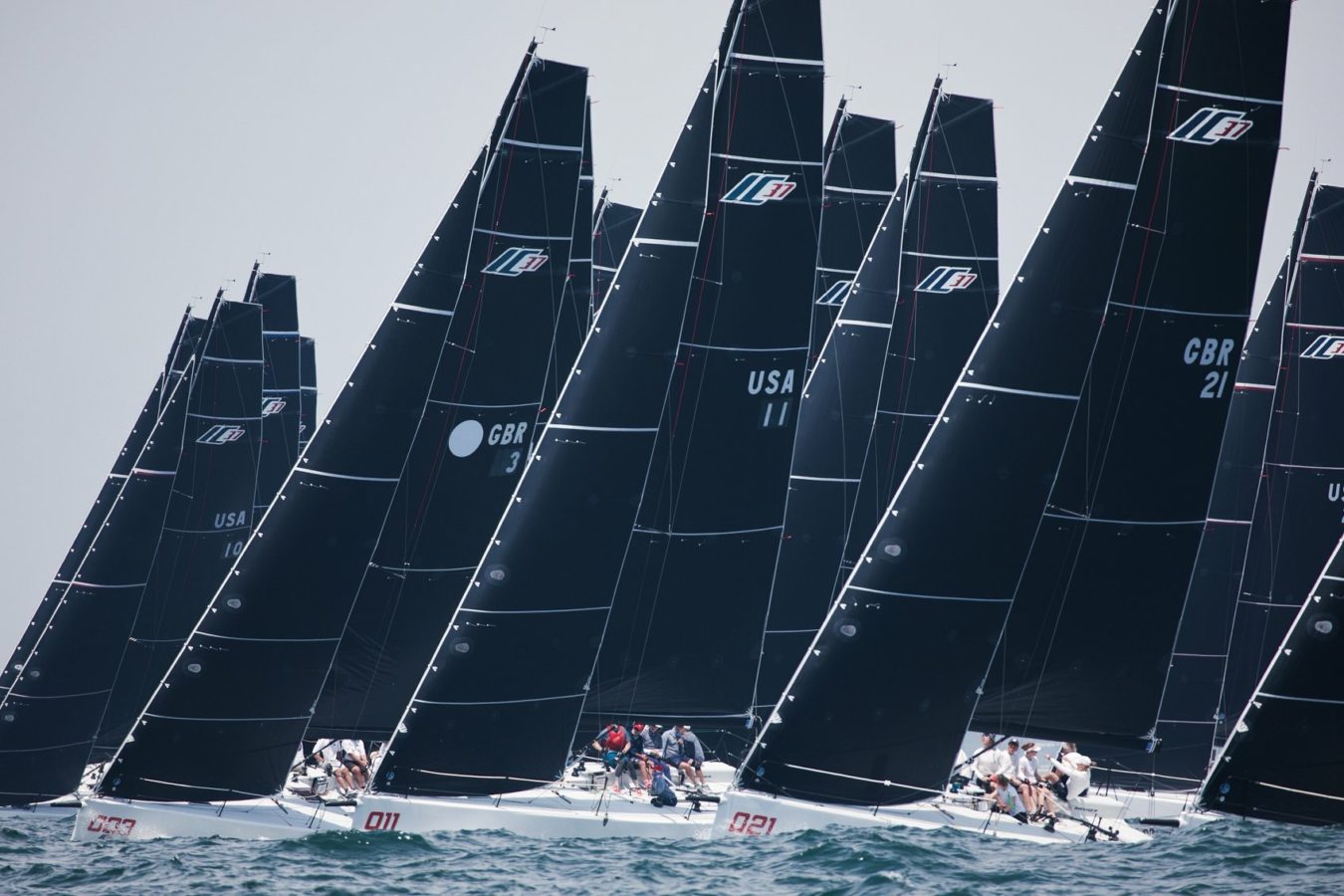
THE BASICS OF SAILING THE IC37
THE BASICS OF SAILING THE IC37
2019 Rolex New York Yacht Club Invitational Cup
With more than 30 boats sold, the IC37 is officially the next big thing in one-design keelboat racing. This Mark Mills design is purpose-built for close racing in large fleets. Strict class rules that mandate mixed-gender, amateur crews and limit teams to one set of three one-design sails per year are intended to level the playing field and create a competitive environment where the team with the most talent and dedication and teamwork wins, rather than the one with the largest bank account. The first few years of a new class are always a time of tremendous learning and the IC37 class is no different. The winning techniques are evolving regatta by regatta. Here is a overview of the boat and the core maneuvers required to get around the racetrack.
READ MORE
READ MORE
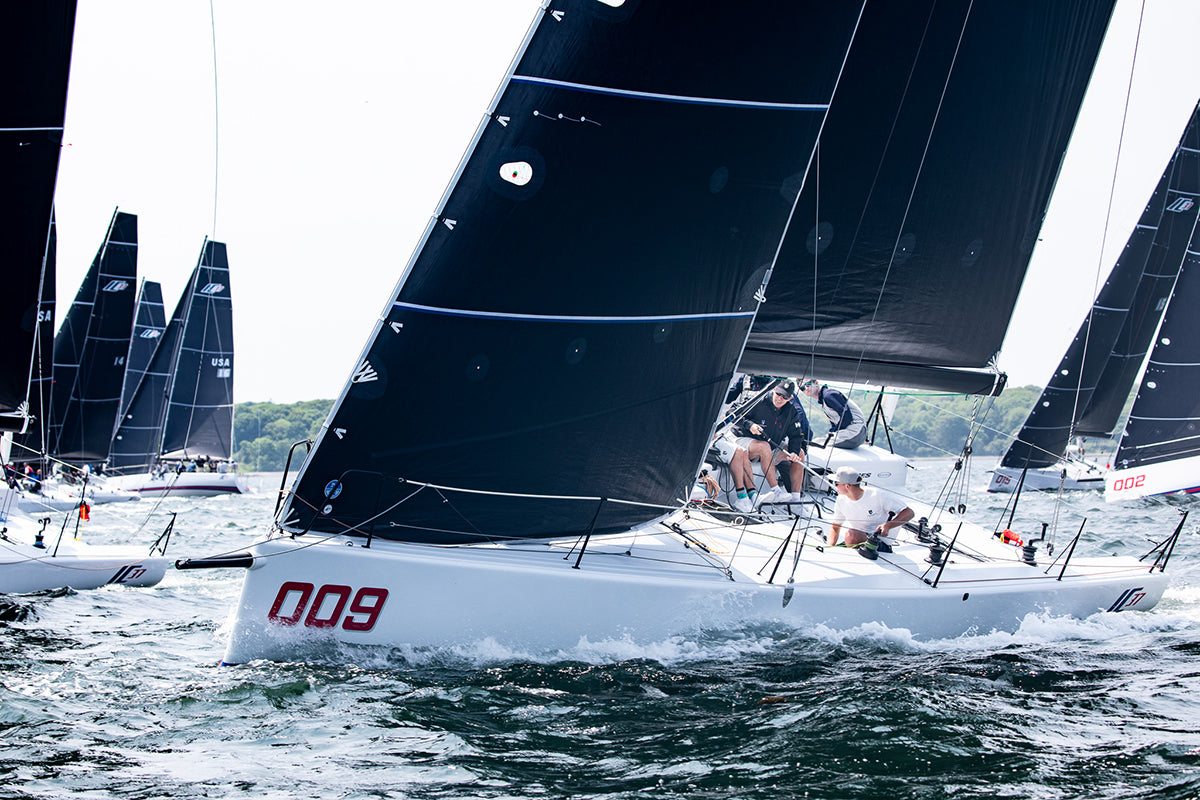
MELGES IC37 TIPS: VOLUME FOUR
MELGES IC37 TIPS: VOLUME FOUR
Expert Notes On IC37 Boathandling and Boat Trim
📸 Melges Performance Sailboats
North Sails experts have been busy figuring out the IC37 since the first boat became available in 2018. In Volume Four of our class tips, we suggest solutions to some common boat handling challenges.
See also: Experts Notes On IC37 Sails | What We Learned at The Leukemia Cup | Training Weekend Notes
Best Practices for One Winch from a Pro Pitman
Pro Pittman Aubie van Beuren shares his suggestions and best practices. At the start, have the jib halyard loaded on the winch with the handle in and the clutch open. That allows for quick tensioning and easing of the halyard in tacks, as conditions warrant.
On the offset leg, the pit person hikes as long as possible and then goes legs in to transfer the jib halyard from winch to clutch. Some halyard tension will be lost, but the luff should be softer for the offset and downwind legs. The winch is now available for the spinnaker hoist.
The kite halyard should live on the winch for the downwind leg. I will also wrap the tack line around the winch with a couple of “safety wraps” to prevent slipping. If the tack line needs to be adjusted, the spinnaker halyard can be temporarily transferred to the clutch.
At the bottom mark, use the winch to control the spinnaker halyard through the drop. Once the kite is under control, load the jib halyard onto the winch and tension as needed for the windward leg. Finally, open the clutch to allow for fine tuning upwind.
📸 Melges Performance Sailboats
Best Boat Trim
Crew weight on the IC37 needs to be as active side to side as it is fore and aft. Since the boat is very wedge-shaped, more heel makes the bow want to drive down into the water. To compensate, move the crew aft earlier up the wind range than expected.
There are two good rules of thumb for most conditions about where the crew should sit:
How much noise does the water make exiting the transom? If you hear a lot of bubbling/gurgling noises, your crew is too far aft.
The knuckle of the bow should always be about two inches underwater. If more than that is submerged, your crew is probably too far forward.
In very wavy conditions, we add a third rule of thumb: If you take three waves over the bow in quick succession, you are too far forward in the boat.
In very flat water, pressing farther forward than normal will help reduce wetted surface.
On the downwind legs, when there is enough pressure to be constantly planing, moving weight farther aft will help stabilize the boat. Getting more of the wide stern in the water and getting the bow out helps the boat track better and makes it easier to drive. If there is too much weather helm downwind, it could be because the crew weight is too far forward and the bow is digging in.
Visit and bookmark the IC37 Class page, your one stop for IC37 resources from North Sails.
📸 Melges Performance Sailboats
READ MORE
READ MORE
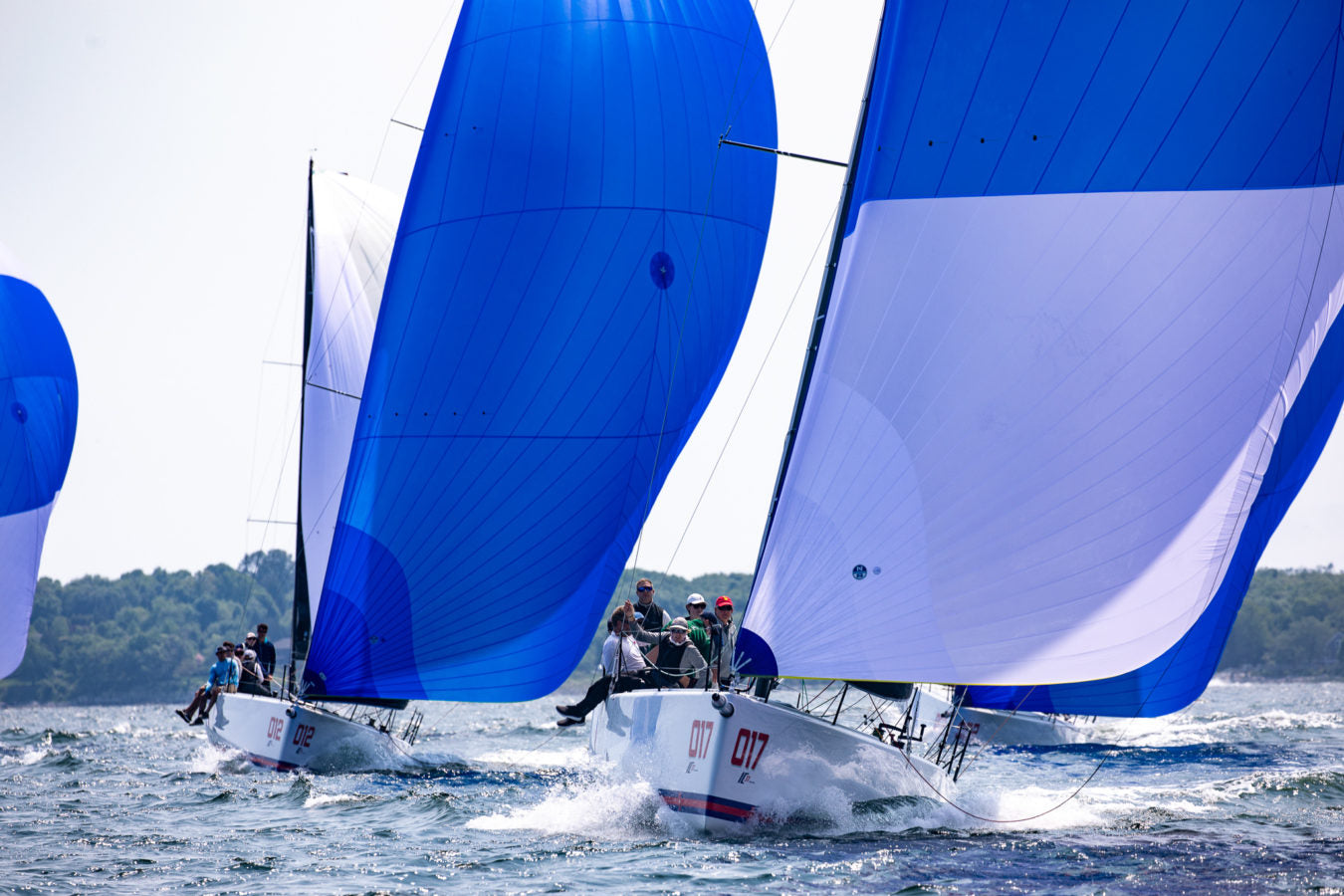
MELGES IC37 TIPS: VOLUME THREE
MELGES IC37 TIPS: VOLUME THREE
Expert Notes On IC37 Sails
📸 Melges Performance Sailboats
The North Sails IC37 class experts sailed the IC37 for most of the 2018 season and are now coaching the fleet during the first three events of 2019. In Volume Three of our class tips, North Sails designer Mike Marshall provides answers to common problems we’ve seen on sail setup and offers his insight to some of the sail decisions that were made during the charter fleet’s inaugural season.
Batten Box Stud Installation
The batten boxes are designed to have the studs screwed as far in as possible while still being only hand tight. The end of the stud attached to the slide might look like it is farther into the sail than the other bushings on the luff, but that is because the batten slides stick out of the mast farther than the intermediate slides.
This is important: don’t over-tighten the studs. They should be screwed in as far as possible by hand and then backed out half a turn. This allows the box to rotate on the stud and line up with the track when the main is hoisted. If the stud is in too far and the box can’t rotate to vertical easily, you risk bending the stud and breaking the batten box.
PIC 1: The stud is fully screwed in but not parallel to the luff. This is incorrect. It needs to be backed out half a turn to allow the box to settle vertically on the mast. PIC 2: The stud is parallel to the luff. This is correct.
Jib Buckles And Spinnaker Damage
The jib buckles have been specifically placed on the port side of the jib to minimize interference with the spinnaker. The spinnaker is most likely to come in contact with the luff side of the jib during a weather strip on port tack. The spinnaker will have minimal prolonged dragging contact with the jib luff during all other takedowns.
The most common way to rip the kite is if the spinnaker sheet doesn’t get eased enough through a jibe. When the boat turns down, the crew must aggressively ease the spinnaker sheet to get the sail away from the boat. If this doesn’t happen, the spinnaker will fold over itself, the old sheet, and the headstay, causing a pinch point where the kite can tear. We have witnessed this firsthand in a jibe where the jib was down and in the pulpit; the sheet wasn’t eased enough, and the spinnaker folded in on itself and tore about 3 meters above the pulpit.
Spinnaker Zipper
It was decided early on that the spinnakers would not have tack zippers. There were two reasons for this. First, with very close racing, sending someone down below is potentially around 10% of your crew weight off the rail. This could be very detrimental to a close cross at the next windward mark. Second, in the spirit of reimagining fun racing, sending someone down below to be banged around while repacking the kite didn’t seem like the right decision. All of this led to the conclusion that the zippers would only be used at the first windward mark of each race. At the second one, the crew will have to learn how to keep the kite in the boat without zippers anyway. Thus, the hassle of zippers was avoided and they were removed. Incidentally, this also prevents a lot of kite-tearing potential from zippers not being broken/opened properly or cars not being removed.
Gybulators
IC37 spinnakers do not come with gybulators for two reasons. In the initial trials of the boat with a shorter pole, we tested outside jibes and found them slower than inside jibes; the foot of the kite is so long that it is an incredibly large amount of sheet to pull in. Since inside jibes seemed to be easier, the pole length was increased to accommodate them. Second, with the pulpit setup and jib configuration, the stiff gybulator made it very difficult to get the tack of the sail past the forestay. At any angle other than vertical, the sail would be stuck on the leeward side of the jib behind the pulpit. If you want to do outside jibes, tape a batten to the bottom of the front of the pole to act as a bowsprit.
Visit and bookmark the IC37 Class page, your one stop for IC37 resources from North Sails.
📸 Melges Performance Sailboats
📸 Melges Performance Sailboats
READ MORE
READ MORE
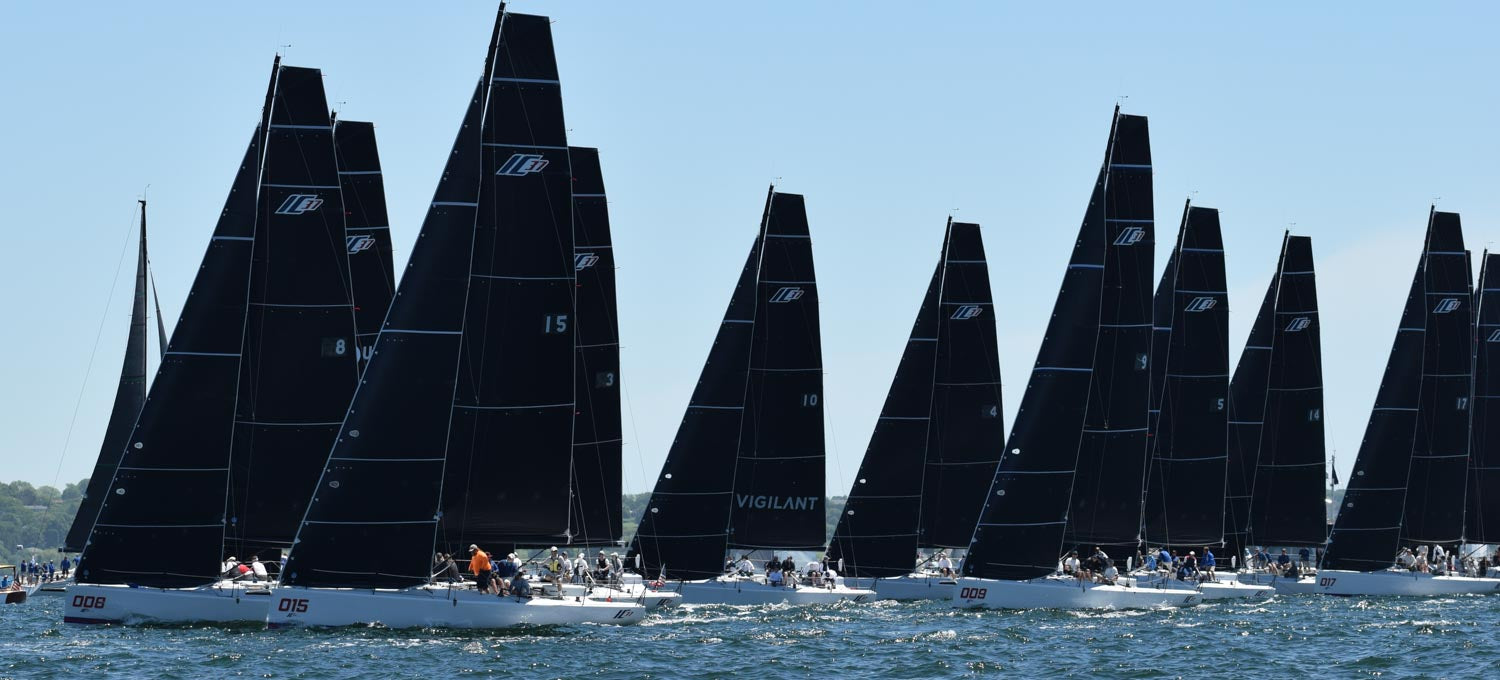
MELGES IC37 TIPS: VOLUME TWO
MELGES IC37 TIPS: VOLUME TWO
What We Learned at The Leukemia Cup
📸 Elizabeth Elder/New York Yacht Club
It can’t get more exciting than this for the Melges IC37 fleet and the New York Yacht Club members. All nineteen teams lined up for the Leukemia Cup for their first “official” regatta. Congratulations to Cory Sertl and Peter Denton’s Das Blau Max for crossing the finish line first.
As the teams figure out the boats, we noticed that the gap between mid-fleet and podium performance is small and getting smaller. Small improvements can make all the difference and means minutes off the course. Here are the takeaways from our experts Ken Read, Kimo Worthington and North U Bill Gladstone:
Spinnaker Sets
The jib is fairly large compared to the spinnaker size which makes it hard to set the spinnaker due to backwind from the jib. Mark the spinnaker halyard with a piece of tape so the mast person pulling up the halyard knows when they have “rung the bell”. As soon as the mast person says “made”, in light air under 10 knots TWS, the jib halyard is released immediately and completely, un-cleating the jammer and smoking the luff down the headstay to get the kite to fly properly, but not before the mast person says “made”. In over 10 knots TWS, a complete release of the jib sheet on the “made” call will ensure that the kite fills properly and immediately. Then, trim in the jib slightly if your intention is to use it as a staysail. And keep in mind, under 10 knots for sure is too light for a jib staysail. 10-12 is marginal. Over 12 is likely.
Jib Trim
“I personally think that the jib track starts all the way inboard and only moves out when the mainsail starts too luff due to excess backwind,” explained Ken Read, Melges IC37 Guest Coach & North Sails President. “I didn’t see many with the car all the way in yesterday. I raced in with a boat in the final race with the long upwind leg and found our boat to be quite fast with the car all the way in.”
Due to the shape of the cockpit, the jib trimmer when trimming to leeward, sits well outboard from the clew of the jib. This makes an optical illusion for the jib trimmer as the lower part of the jib is very round and looks to literally be pointing back towards the middle of the boat. That is actually not the case. The lower leech of these jibs is quite open to allow for the jib to be sheeted quite far inboard so take advantage of the lead positioning and keep trying to sneak it inboard.
📸 Melges Performance Sailboats
Runners During Tacks
In fresh breeze, with the runners loaded hard, it pays to trim the new runner on before the old runner is eased – the goal is to transfer the runner load rather than ease one side and reload the other side. This requires that the tactician loads and grinds the new runner before the helm goes down, as the old runner needs to be eased promptly as the bow goes through the wind. (When it is windy enough to require this, there should be at least two crew behind the driver – usually tactician and floater.
Marking the runner with tape near where the line goes around the winch at max load helps to keep the runner trimmer’s head down grinding instead of looking up at the main to see how much is on.
Halyard
Play with the controls, constantly. Jib halyard tension directly affects shape and often it is an overlooked control as the breeze picks up or dies down. Keep the cabintop winch loaded with jib halyard when going upwind to allow for fine tuning as velocity shifts happen – clutch stays open. On final approach to windward mark, the pit person closes clutch, swings legs in, transfers load from cabintop winch to clutch and preloads cabintop with spin halyard ahead of hoist.
Mainsail Trim
In light air carrying the boom just above centerline allows for a proper twist profile without having the main fall into the jib. Don’t get carried away with this. A boom width above center seems to work; up near the runner is too much. Unless running very deep, actively trim main when reaching. It is very easy to ease too far out and lose any advantage from a properly trimmed main.
Spinnaker Drops, Step By Step
Timing is everything, clear actions are everything else. First step: put your strongest person on the takedown line, ready to go in the cockpit. Second step: if you have an extra body, someone down below acting as squirrel forward and to starboard helps to gather the sail down below (faster and cleaner douse). Third step: a decisive turndown to unload kite should be timed at the exact instance when a douse happens. Blow sheet and halyard while takedown line is being hauled; all load is now out of sail and belly is aimed at the hatch. When foot and belly is under control, blow the pole while bow team is gathering tack – this helps bring pole in. When all under control, finally blow the tack. Pole should be in, tack following suit.
Your resource page for the IC37 by Melges
Sunday Pre-Racing DockTalk with Ken Read
https://www.northsails.com/sailing/wp-content/uploads/2019/06/Melges-IC37-Class-YT.mp4
READ MORE
READ MORE

IC37 TUNING GUIDE
Also available: IC37 Boathandling Manual
Mast Shims
The IC37 was designed to have simple tuning adjustments in order to minimize boat-to-boat variation and highlight the sailors’ performance. Therefore, the only allowable rig tune adjustment is the shim height beneath the base of the mast, which affects the shroud tension. This system replaces the traditional process of independently adjusting turnbuckles at the base of each shroud. Each boat is supplied with one shim of each of the following sizes: 20mm, 10mm, 5mm, 3mm, and 2mm. The 20mm shim is removable for the sole purpose of stepping and un-stepping the rig; it should always be in place while sailing in any condition. Beyond that, you may add any individual shim or combination of shims you see fit. The table below shows our suggested shim height for each respective wind range.
WIND SPEED (knots)
SHIM HEIGHT (mm)
0-6
22
6-10
28
10-14
35
14+
40
Rigging Tensions (On Full Shims)
DESIGNATION
LOOS RT11 GAUGE
LOOS RT10 GAUGE
V1
39
-
D1
-
20
D2
-
15
Headstay
20
-
Battens
Before putting up your IC37 North Sails, it is important to properly tension all battens to get the desired sail shape. For the mainsail, we recommend tensioning the leech battens to only just remove the wrinkles from the batten pocket. The full battens should be slightly tighter, causing the batten pocket cloth to be completely smooth, but not creating wrinkles parallel to the pocket.
The jib comes with two top batten options. This allows the trimmer to match the flying characteristics to varying breeze strengths. The light batten is flexible, which allows more shape in the head of the sail when the breeze is light. In comparison, the heavy batten is more rigid to reduce shape in the head and help induce twist in the sail.
Crew Weight
Crew positioning is very important on the IC 37. Moving weight fore and aft as the wind speed and angle change is crucial to performance. As the breeze picks up, weight should be shifted progressively further aft. This increases righting moment, as more of the crew weight reaches maximum beam. As a result, the sails can be trimmed harder and the boat can be sailed flatter and faster than it would with weight too far forward. As the breeze lightens, be sure that the crew is active with moving forward. When weight is too far aft, the transom will produce a gurgling sound as it displaces too much water.
Jib Trim
The IC37 is equipped with four main controls to manipulate the jib trim – halyard tension, athwartship lead position, vertical lead position, and sheet tension. Using these four controls together can produce the wide range of shape in the jib required to perform well in all wind conditions.
Jib Halyard Tension
Halyard tension controls the entry angle, as well as upper leech profile. A good base setting is just enough tension to remove any wrinkles coming off the luff hanks, with the goal of getting the sail to be smooth, but not tight. The amount of tension required to achieve this will change with the breeze. If over tightened, the luff will become flat and unresponsive, and may have vertical wrinkles running from tack to head. We suggest using a number scale with a mark on the deck for consistent tension when hoisting the jib around a turning mark.
Athwartship Lead Position
A track system oriented athwartship controls the jib’s angle of attack. A tighter angle of attack allows the boat to sail at a closer angle to the wind, but when the car too far inboard, the wind coming off the jib will be negatively interfering with the main shape. For the best relationship between the main and the jib, the area between the two sails, the ‘slot,’ should be as even as possible. The best way to tell if your slot is set up well, is to look at the angle of the leech telltales of the jib. The top telltale should be flying at an angle that matches the entry angle of the mainsail.
Vertical Lead Position
The jib lead can be raised or lowered to adjust the leech profile. This control replaces the traditional fore/aft lead adjustment. A lower jib lead will result in a tighter overall leech profile and a deeper foot, the equivalent of moving the traditional lead forward. Easing the lead up will flatten the foot and induce more twist in the leech. This is the key control to achieving a vertically even slot.
Jib Hobble
The jib hobble system is used when sailing downwind with both the spinnaker and jib up. The hobble is meant to caddy the jib from gybe to gybe with no adjustment required. A good base setting is to have the jib trimmed enough that the lowest luff telltales are flowing and the top of the jib not luffing. However, it is better to have the sail slightly under trimmed than over trimmed. If the jib is eased enough that it can wrap around the forestay, it will need to be trimmed just prior to the gybe, then released back to its original setting. The hobble is trimmed using a single line lead through a cleat in the center of the boat.
Downwind Modes
The IC 37 (as well as many other one design classes) races with only one asymmetric spinnaker, which limits the variability in VMG angles when sailing downwind. However, there are still many different modes of sailing downwind. In light air, we suggest dropping the jib to allow the spinnaker to maintain as much flow as possible. While keeping the jib fully onboard as it drops is always preferable, the luff hanks allow the jib to be dropped quickly without going overboard when the situation requires. While having the jib down does allow a lower mode to be sailed, the boat still does not like to sail directly downwind. When the breeze permits leaving the jib up, you must transition your mode to one with a tighter wind angle. This should only be done in planing conditions.
Runner Load
Trimming the running backstays, or ‘runners,’ is one of the most important controls for upwind speed. Grinding on more runner tension will make the headstay tighter, flatten the main by bending the mast, and open the main leech. This depowers the sail enough to let the boat stay under control at higher wind speeds.
Reefing
After all the mast shims have been put in, the next step to depowering the boat is to reef the sails. The first sail to reef is the jib, which usually happens around 18-20 knots of true wind speed. When reefing the jib, the best practice is to drop the sail onto the deck, roll the foot from the bottom up, close the zipper with all excess cloth fully enclosed, then re-hoist the sail. The main reef will be added once the average true wind speed is around 23-25 knots. Having the runners and mainsheet completely eased when putting the reef in the main is important and will avoid undue stress on the main halyard components.
Note overbend wrinkles
The crew member trimming the runner should be looking for these wrinkles to appear in the main to know when the maximum load is achieved and should not pull more runner on beyond that point.
Polar Boat Speed
UPWIND
TWS
VS
TWA
HEEL
6
6.06
44.6
11.5
8
6.44
38.9
16.0
10
6.71
36.9
18.6
12
6.91
35.9
20.4
14
7.05
35.5
21.3
16
7.14
35.4
23.0
18
7.21
35.6
24.4
20
7.30
36.3
25.0
DOWNWIND
TWS
VS
TWA
HEEL
6
6.08
143
-2.1
8
7.21
147
-1.5
10
8.30
146
0.4
12
9.54
144
4.2
14
11.21
141
11.5
16
12.79
143
14.4
18
14.11
145
13.3
20
15.10
147
11.3
READ MORE
READ MORE
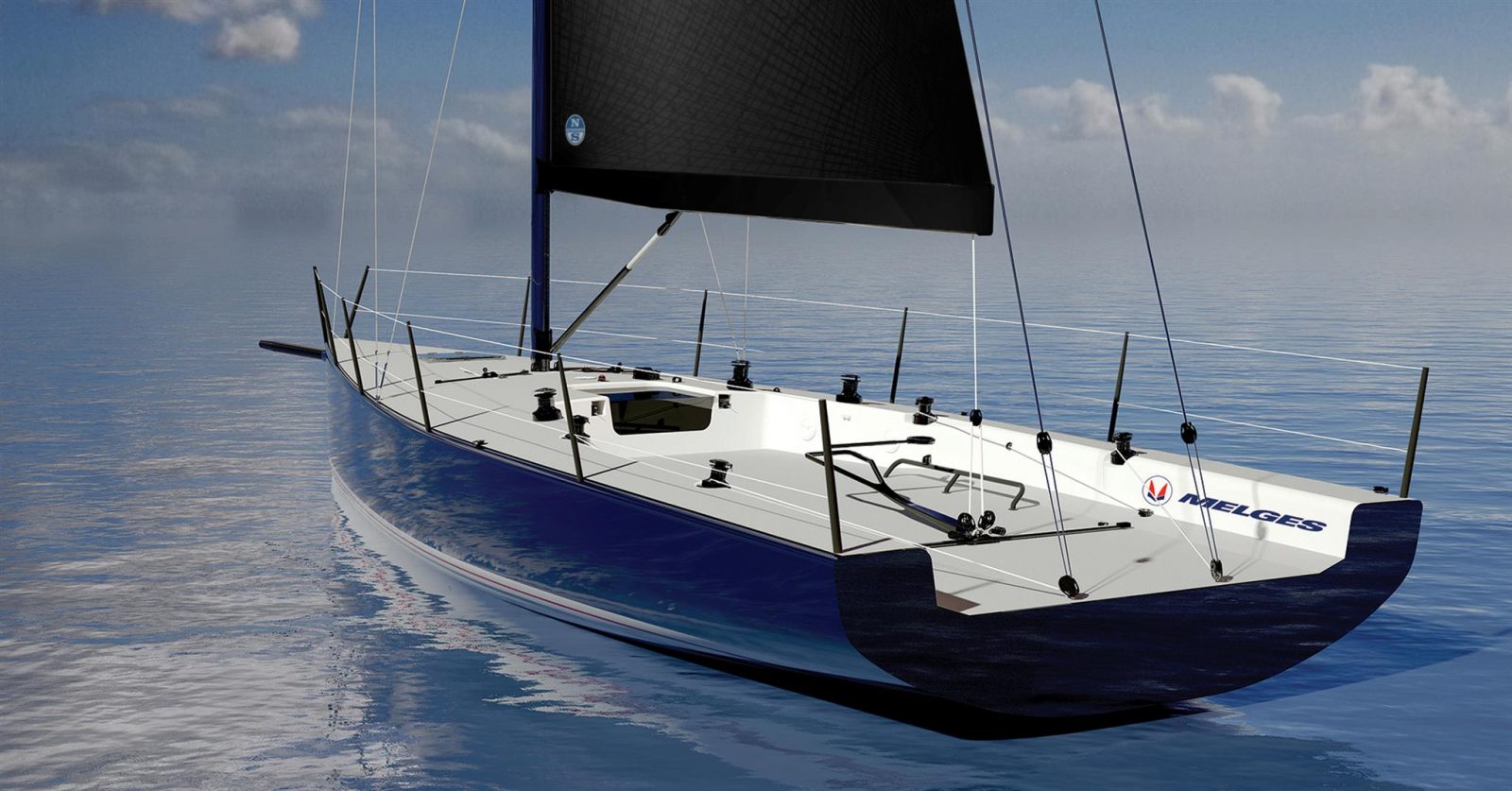
NORTH SAILS EXCLUSIVE SAIL SUPPLIER FOR THE NEW IC37 BY MELGES
NORTH SAILS EXCLUSIVE SAIL SUPPLIER FOR THE NEW IC37 BY MELGES
North Sails to Deliver the First Set of Sails in Early 2018
North Sails is a proud to be the exclusive sail supplier to the new IC37 by Melges. A fun, modern 37-foot race boat, this exciting new class will make its debut in the spring of 2018. The first 20 hulls have been purchased by the New York Yacht Club for the 2019 Rolex New York Yacht Club Invitational Cup, and it is Melges’ expectation to grow the class to an international audience over time.
North Sails President Ken Read and One Design experts have been working with boat designer Mark Mills and the New York Yacht Club to design an inventory that best supports this Corinthian focused class. North Sails will deliver the first set of sails in early 2018.
“The IC37 by Melges is a perfect example of a class that will be accessible to the masses,” commented Ken Read. “We have designed high performance yet cost controlled inventory that puts focus on smarts and crew work, rather than managing a large sail inventory. The class will enforce a strict one-design rule, limiting expensive sail development arms races. As exclusive supplier to events like the Volvo Ocean Race, America’s Cup, M32 circuit, and Extreme Sailing Series, the choice of North Sails as a supplier ensures IC37 owners will have industry-leading technology.”
Learn more about the IC37 by Melges by visiting MelgesIC37Class.com
READ MORE
READ MORE





















